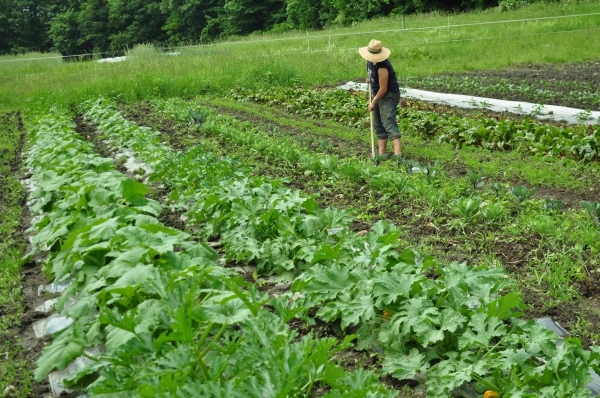BRATTLEBORO — Vermont still ranks at the top of the annual Strolling of the Heifers Locavore Index, meaning that it has the strongest producers and consumers of local food of any of the 50 states.
However, the rest of the Index has been considerably shaken up by new data derived from the recent Census of Agriculture, conducted by the U. S. Department of Agriculture.
The Index has been published annually since 2012 by Strolling of the Heifers, a non-profit food advocacy organization.
“When we first launched the Index, there was very little data available indicating how much local food was consumed in each state,” said Orly Munzing, founder of Strolling of the Heifers, in a news release.
“We were looking at the numbers of farmers markets and CSAs (consumer-supported agriculture entities) on a per capita basis,” Munzing added. “It was an indirect measure, a proxy for the real metric, which would be the dollar value of local food produced and sold in each state.”
That information is now finally available, with last month's release of the USDA's 2017 Census of Agriculture, which gathers information on the output and business practices of all of the nation's farms.
The Census of Agriculture is conducted every five years, and the 2017 Census included two questions about local food:
• The value of food sold by farmers directly to consumers (at farmers' markets, farmstands, CSAs and direct online sales). This was first included in the 2012 Census.
• The value of agricultural products sold by farmers directly to local retailers, institutions, and food hubs. This was included in the Ag Census for the first time in 2017.
“Having this information allowed us to revamp the Index completely,” said Martin Langeveld, compiler of the Index. “These two metrics, combined, paint a picture of how much food is produced and sold locally in each state, through all channels. We looked at that on a per-capita basis, and ranked the states accordingly. So the methodology is much simpler, but also much more accurate.”
As a result of the incorporation of the new USDA data, there have been some major shifts in the Locavore ranks.
For example, California, which ranked 27th in 2018, is now No. 2. Hawaii, which was 8th, is now third. And Washington jumped from No. 11 to No. 4.
Other states with strong upward moves included New Mexico, Wyoming, Arizona, Pennsylvania, and Delaware.
Several New England states slid to lower spots. New Hampshire moved from fifth to 16th; Massachusetts from sixth to 22nd; Rhode Island from 10th to 33rd; and Connecticut from 17th to 27th.
Another major decline was registered by Montana, which was third in 2018 but is now 28th.
In Vermont, at the top of the list, the total local food sales per capita came to $166.22, compared to California's $129.88 and Hawaii's $107.29.
“This is a combination of retail and wholesale sales,” Langeveld said, “so actual consumer spending on local food is more. But, when compared with per capita food consumption, including food away from home, of about $5,000 per capita, it could still grow quite a bit more.”
“That's why we've been publishing the Locavore Index,” said Munzing. “The purpose of the Index is to stimulate conversations and efforts in every state aimed at increasing the amount of local food sold and consumed. That's great for the farmers and great for consumers.”
Anson Tebbets, Vermont's Secretary of Agriculture, Food and Markets, said the locavore index shows how the Vermont public increasingly supports local food.
“This consistent backing, and the evidence of solid data, tells an important story,” Tebbets said. “It's clear Vermonters like what they are buying and are supporting local agriculture. Thanks to the public, farmers, and food companies, our rural communities are stronger. Let's build on the good news here.”
Looking at the U.S. as a whole, locavorism has clearly been growing rapidly. The value of food sold directly to consumers via farm stands, farmers' markets, CSAs and online, was measured in both the 2012 and 2017 USDA Censuses and more than doubled during that period, from $1.31 billion to $2.81 billion.
The new Census metric of food sold to local retailers, institutions, and food hubs was not measured in 2012, but came in at $9.04 billion in 2017.
Because the Census of Agriculture doesn't cover Puerto Rico and the District of Columbia, those areas were dropped from the Index this year.
And going forward, Strolling of the Heifers says it plans to update the Index only every five years, following the release of USDA Census of Agriculture data.
The next Census takes place in 2022; results, and the next Locavore Index, will be published in 2024.
